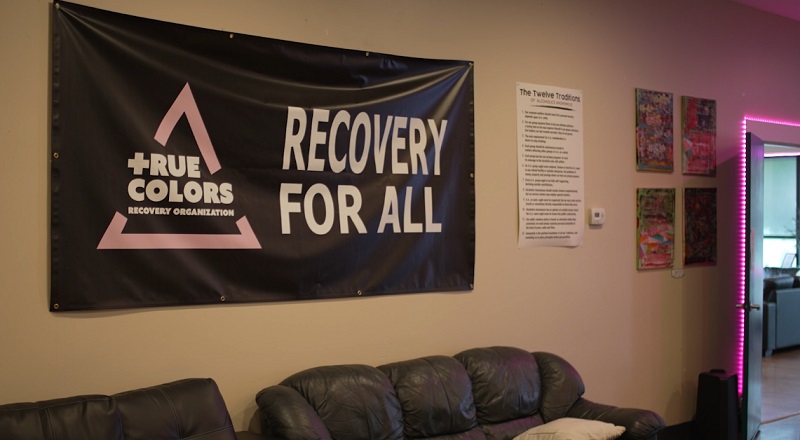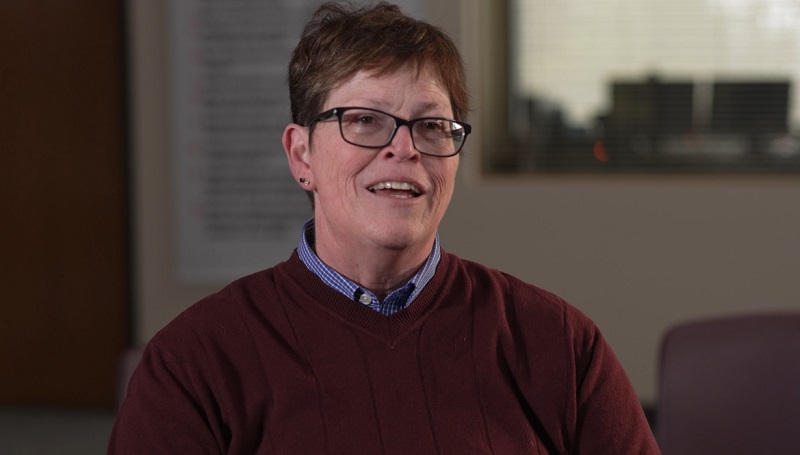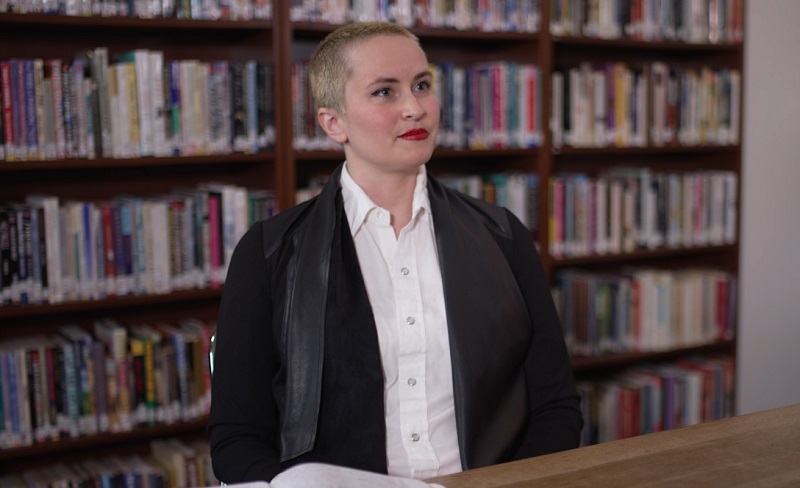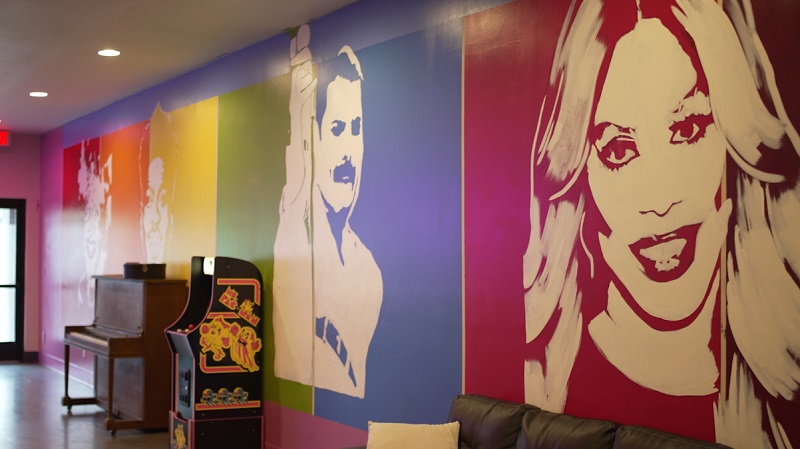PORTLAND, Ore. (KOIN) — The gay rights movement started in a bar, The Stonewall Inn, one summer night in 1969. On June 28, police raided the Greenwich Village club which sparked a riot and six days of protests and violence with law enforcement. The Stonewall Riots, as they came to be known, were a catalyst for the gay rights movement in the US and abroad.
But in those days, gay bars were the only places to be safe while gay, lesbian, trans or in drag. For decades gay bars have been havens of acceptance, to escape an outside world of attacks and degradation — or from entire governments that pass laws attacking who you are.
Research around addiction shows queer and trans people are twice as likely to struggle with substance use. So the question is:
Is it the bars that have fueled a culture of substance use or is it a society that has pushed queer and trans people to those places as a means to escape and feel safe?
‘Lean into focusing on recovery’
Specialized care for the LGBTQ+ community has been shown to be more effective — but finding it is extremely difficult. Oregon, in fact, ranks last in access to addiction treatment for the entire population.

To understand why is a causality dilemma.
Finding your true colors is one step that Amanda Ireland-Esquivel said is crucial for someone recovering from drug or alcohol addiction.
Six months ago, True Colors Recovery in North Portland became the first dedicated recovery center for people who are queer or trans, removing a barrier to recovery.

“We kind of want to remove the barriers of survival away from the community,” Esquivel told KOIN 6 News. “What we want is for people to walk into the door, feel safe, feel like they don’t have to explain who they are and can really, like, lean into focusing on what their recovery looks like.”
She said everyone has “had an experience of having to walk into the room and assess whether we are received to be ourselves or not.”
Esquivel did not feel the ability to be herself and come out until she was incarcerated at Coffee Creek Correctional Facility in Wilsonville.
“There’s a lot of representation and normalcy with, you know, same-sex couples within the prison system,” she said. “For me, surprisingly, prison was a place of safety for me to be my true self.”
During her time in prison she began her path from addiction toward recovery. It wasn’t the prison system that helped her. Rather, she said, it was the network on the inside.
“It was the individuals that had a willingness and want to change that were role models for me,” she said.
‘Easier to be honest when drunk’
Mike Marshall, who is in his 60s, was gay at a time when it wasn’t safe to be out. Marshall now leads Oregon Recovers, a coalition pushing for solutions to addiction in Oregon. He came to his current role from a career in politics — and a life fighting his addiction to alcohol and other drugs.

“It’s important that as you are participating in your own treatment you feel supported in that identity,” Marshall said.
The AIDS crisis also played a role in substance abuse.
“I think many people, my generation, their journey, their coming out process was a lot easier to be open and honest when you were drunk,” he said. “We were a highly traumatized community pre-AIDS crisis, right? Because we were raised to believe we were flawed.”
AIDS took thousands of lives with no treatments in sight throughout the 1980s.
“People didn’t know if they were going to be alive the next year and so boundaries were constantly being blown out,” Marshall told KOIN 6 News. “You have the huge trauma, whether you became HIV-positive or not, you know your roommate, your colleague, your boyfriend, your exes were dying for a period of time — and nobody seemed to care.”
In the late 1990s and early 2000s, Marshall was living in California and working on political campaigns that were the early sparks of the marriage equality movement.
At that same time drugs at dance parties and nights out became more common in his life. Eventually, they became his life.
“I started using meth in 1998,” he said. “It was a 10-year trajectory downwards.”
His lowest point came when a close friend died of AIDS. As everything fell apart around him, another friend took him to the hospital to get clean.
“I woke up one morning and I was broke, I was unemployable, I was 3 months behind on my rent,” he said. “The intake nurse was 10 years in recovery and she made me sit in her office all day long. The first day I just sat and cried. I get emotional just thinking about it.”
One friend covered Marshall’s rent. Another put up $15,000 so he could get into treatment. It’s a privilege he knows few people have.
At the same time he was facing his addiction he was also facing discrimination.
“I went to one where the guy leading the meeting was just making homophobic remarks and I was the only queer person in the treatment class at that point,” he said. “Part of me wanted to get up and walk out. And if I’d been 26, that’s exactly what I would have done. But, again, the system isn’t designed for us to succeed.”
Higher addiction rates in LGBTQ+
The National Institute of Health reports 39% of LGBTQ+ people will struggle with addiction, whereas the rate for heterosexual people is 17%.

Cheryl Gifford, the director of mental health for Serenity Lane, said it’s likely substance abuse rates have increased since the pandemic.
“We don’t just get abused by everything around us. When we get told a negative message over and over we take that message in and we start beating ourselves up with it. And I think for the LGBT community, especially, we’re really good at that,” Gifford told KOIN 6 News.
She thinks the disproportionate nature of it all comes from “your own coming out process and your own internal possible homophobia or whatever phobia you’re dealing with, but you’re also dealing with a community that’s resonating with that negative message and giving you that message in 100 different ways.”
Amelia Shelly with the Equi Institute said it’s “less about some sensationalized, inherent part of being queer, trans, intersex, asexual, two spirited individual that makes addiction more common or pervasive, it’s about the cultural conditions that we live with.”

The website TransLegislation.com notes there were 15 bills introduced in 2015 targeting drag shows, transgender health care, access to bathrooms or sports or other anti-queer and anti-trans actions. To this point in 2023 — about a quarter of the way through the year — there have been 494 bills introduced.
“The message that sends to people is that it’s not safe to be yourself, you don’t matter, you’re less than human,” Shelly said. “The queer and trans hostility in this country and the racial hostility in this country exacerbates the issues of substance use issues because accessing care is that much more difficult.”
Shelly was brought in to the Equi Institute as a recovery mentor to help people who have gone through treatment. Their position was made possible through funding from Measure 110, the voter-approved law that spends marijuana tax money on recovery services and decriminalized small amounts of drugs.

Treatment and recovery spaces, like True Colors, are a step toward easing the path to finding specific addiction care for queer and trans people. But True Colors is the only facility of its kind in Oregon.
The NIH reports just 7% of treatment and recovery centers have specialized programs for queer and trans people.
In response, Serenity Lane has been stepping up its efforts, adding diversity, equity and inclusivity standards and training in order to treat addiction more effectively.
Gifford said that shows “the message is getting out.”
Ireland-Esquivel said 500 people each month are coming through True Colors’ doors only 6 months after their grand opening It’s a foundations he believes they can build on.

“Being able to have sober spaces where people can access and then not jeopardize their recovery is essential,” she said. “It feels good, you know. You always have that fear where you’re going to open the door and then nobody’s going to show up. Or you might have, like, overestimated the need. Then being able to see the response that’s so welcoming from the community is very affirming.”
